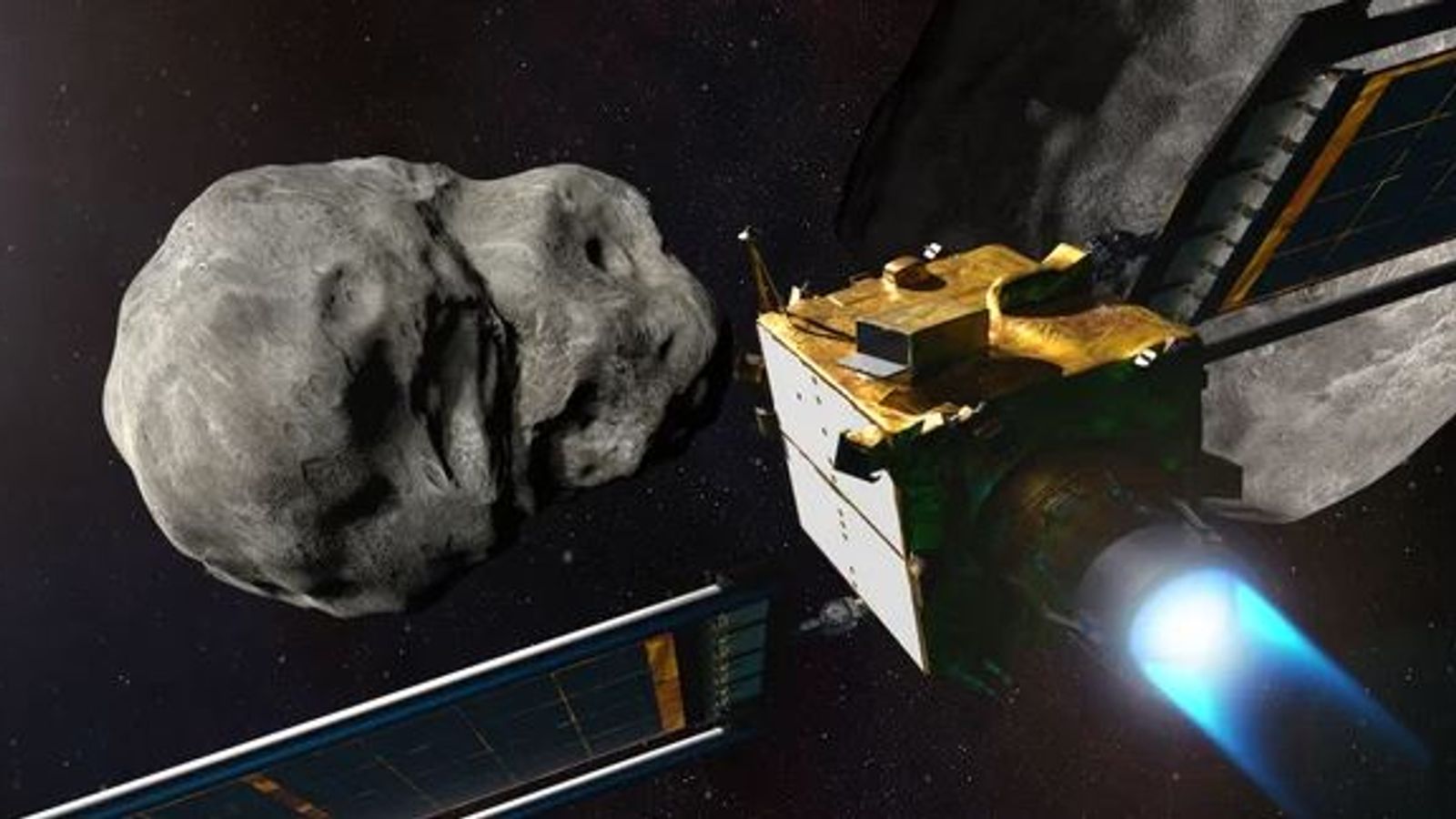NASA-built spacecraft to deliberately crash into asteroid in test mission
Dimorphos is no threat to Earth but it has been chosen to help prove that dangerous incoming rocks can be deflected by intentionally crashing something into them.
Thursday 22 September 2022 07:13, UK
An illustration of NASA’s DART spacecraft on a collision course with the asteroid Dimorphos. Pic: NASA/Johns Hopkins APL
Image:
An illustration of NASA’s DART spacecraft on a collision course with the asteroid Dimorphos. Pic: NASA/Johns Hopkins APL
Why you can trust Sky News
A NASA-built spacecraft will deliberately crash into an asteroid as part of a test mission later this month.
The spacecraft, known as Double Asteroid Redirection Test (Dart), is expected to collide with a 170-metre wide (560ft) asteroid named Dimorphos at 12.14am UK time on 27 September.
Dimorphos is no threat to Earth but it has been chosen to help prove that dangerous incoming rocks can be deflected by intentionally crashing something into them.
Dimorphos orbits Didymos in around 11 hours and 55 minutes but astronomers at NASA hope that Dart will destroy itself and cut about 10 minutes off this time.
NASA said: “Dart’s target asteroid is not a threat to Earth but is the perfect testing ground to see if this method of asteroid deflection – known as the kinetic impactor technique – would be a viable way to protect our planet if an asteroid on a collision course with Earth were discovered in the future.”
Dart will go at speeds of about 15,000 miles per hour before it collides with Dimorphos, which will be about 6.8 million miles from Earth at the time.
Unlike the plot of the hit 1998 Bruce Willis film Armageddon, Dart will be unmanned for the mission, with it designed to operate fully autonomously.
MORE FROM SCIENCE & TECH
EMBARGOED TO 0001 THURSDAY SEPTEMBER 22 Undated Durham University handout image of a 4D scan of a fetus showing a neutral face (top) and the same fetus showing a laughter-face reaction (bottom), after being exposed to the carrot flavour. Issue date: Thursday September 22, 2022.
Babies in the womb ‘smile for carrots and cry at greens’, study suggests
Les Wood was diagnosed with MND 10 years ago and first took part in the trial in 2016
Motor neurone disease: ‘Milestone’ treatment slows or even reverses progressive muscle weakness, study finds
Little Plumpton shale gas site, Lancashire
Over a quarter of local authorities in England are covered by oil and gas licences – could fracking come to your area?
It will be the first full-scale demonstration of asteroid deflection technology and will be recorded by an Italian Space Agency satellite called the Light Italian CubeSat for Imaging of Asteroids.
In 2024, the European Space Agency (ESA) will send its Hera spacecraft on a two-year journey to examine the aftermath.
The ESA said: “By the time Hera reaches Didymos, in 2026, Dimorphos will have achieved historic significance: the first object in the Solar System to have its orbit shifted by human effort in a measurable way.”

























